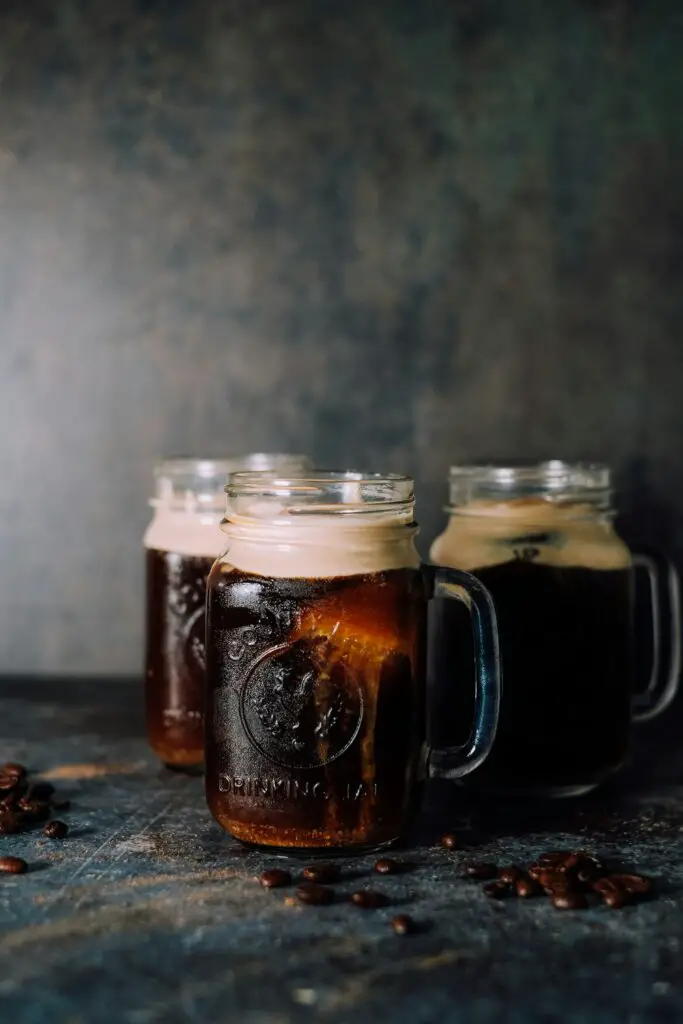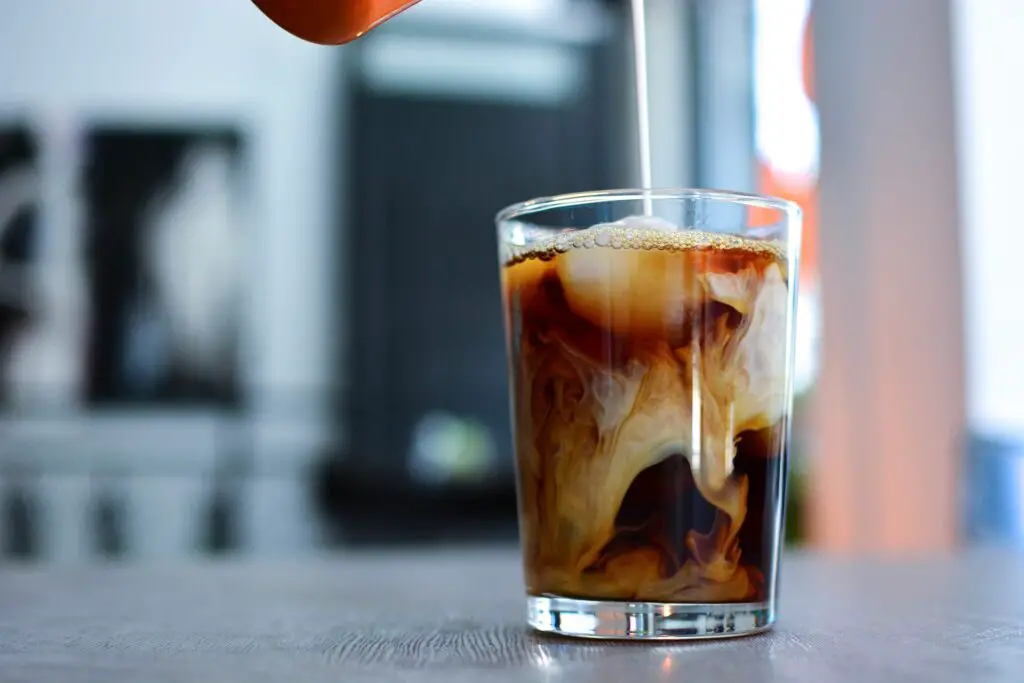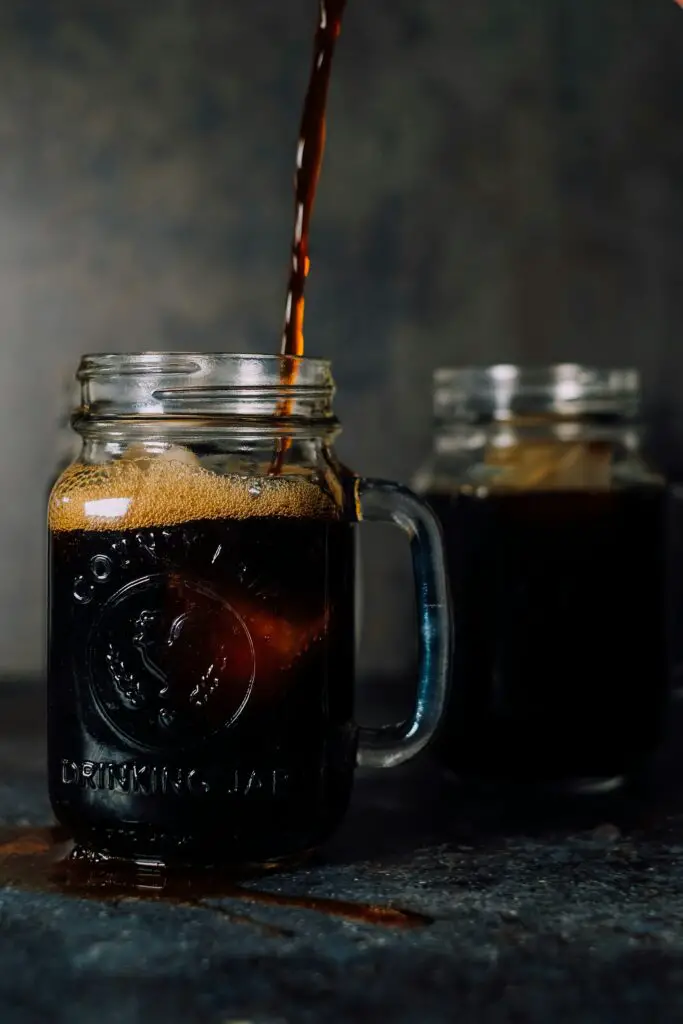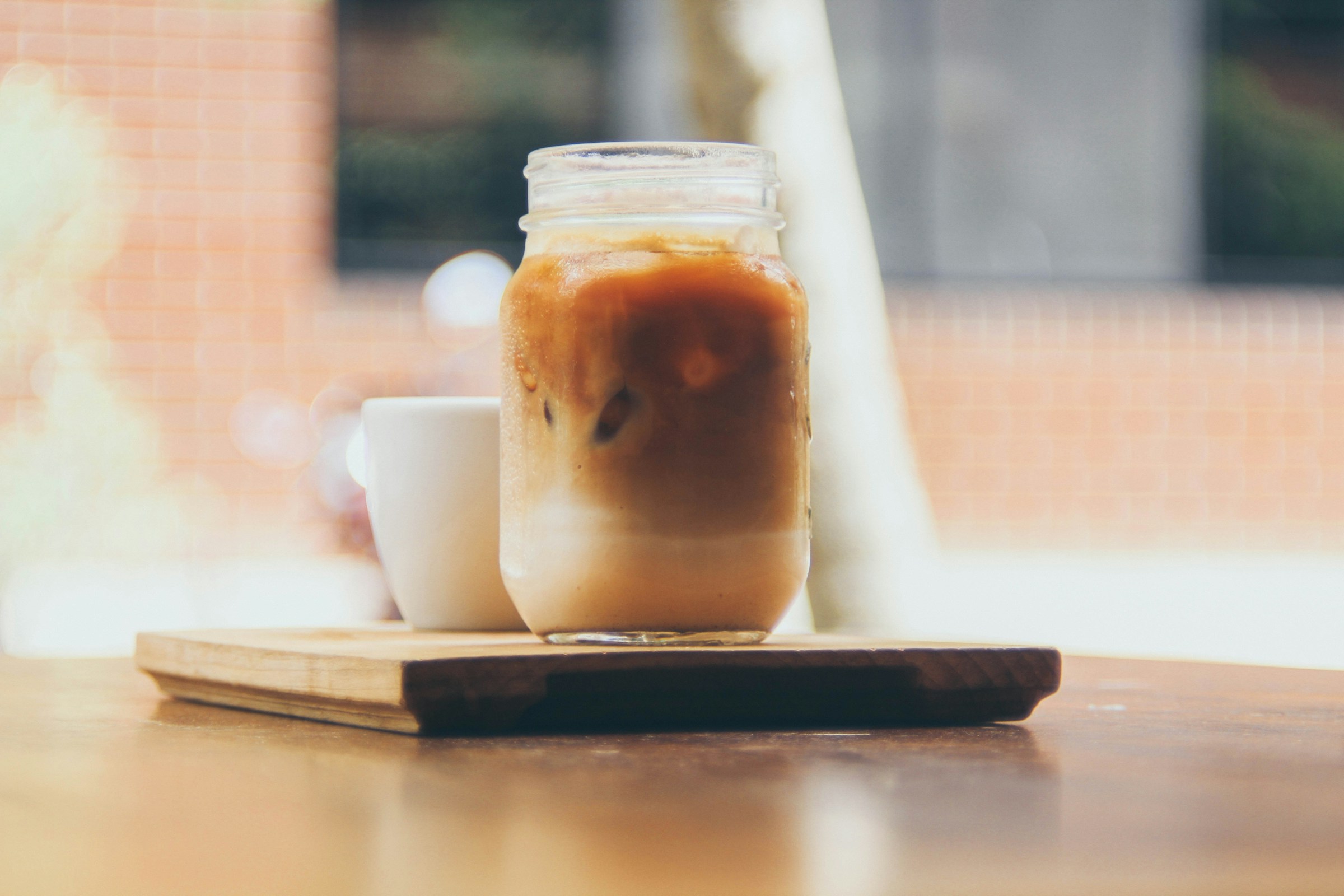Cold brew coffee is becoming a favorite among coffee lovers.
It’s smooth, refreshing, and easy to make at home.
Unlike iced coffee, which is brewed hot and then cooled, cold brew is made by steeping coffee grounds in cold water for several hours.
This method creates a less acidic and bitter drink, perfect for those who prefer a milder taste.
With cold brew, you can enjoy a delicious and customizable coffee experience any time of the day.
Ready to learn how to make your own cold brew? Let’s get started!

How To Make Cold Brew Coffee: At A Glance
- Step 1: Measure and Grind the Coffee Beans
- Step 2: Combine Coffee and Water
- Step 3: Steep the Coffee
- Step 4: Strain the Coffee
- Step 5: Enjoy!
What is Cold Brew Coffee?

Cold brew coffee is a unique brewing method where coffee grounds are steeped in cold or room temperature water for an extended period, usually between 12 to 24 hours.
This slow extraction process results in a coffee concentrate that is smoother and less acidic than traditional coffee.
Traditional iced coffee, on the other hand, is brewed hot and then cooled by pouring over ice.
This quick method can often lead to a more bitter and acidic flavor because the hot water extracts different compounds from the coffee grounds.
The key difference lies in the brewing temperature and time.
Cold brew coffee uses cold water and a longer steeping time, which extracts fewer bitter compounds and more sweet flavors from the coffee grounds.
This process gives cold brew its signature smooth and mellow taste, making it a favorite for those who prefer a less acidic coffee experience.
In contrast, iced coffee, being brewed hot, tends to retain more of the coffee’s natural oils and acids.
When cooled, these elements can sometimes make the drink taste harsher or more bitter.
Cold brew, with its gentle extraction process, avoids this issue and produces a consistently smooth and enjoyable beverage.
Benefits of Cold Brew Coffee

Cold brew coffee offers several advantages that make it a popular choice among coffee enthusiasts.
Here are the key benefits:
Lower Acidity and Bitterness
One of the main benefits of cold brew coffee is its lower acidity compared to hot-brewed coffee.
This is because the cold water extraction process reduces the amount of acid released from the coffee beans.
As a result, cold brew coffee is gentler on the stomach and less likely to cause acid reflux or indigestion.
Smoother and Milder Taste
Cold brew coffee is known for its smooth and mellow flavor profile.
The extended steeping time in cold water extracts fewer bitter compounds and more of the coffee’s natural sweetness.
This results in a coffee that is less bitter and more pleasant to drink, even without added sugar or cream.
High Caffeine Content
Cold brew coffee typically has a higher caffeine content than regular iced coffee.
The longer steeping time allows more caffeine to be extracted from the coffee grounds.
This makes cold brew a great option for those looking for a strong, energizing coffee.
Versatility in Serving Options
Cold brew coffee is incredibly versatile.
You can enjoy it black, over ice, or mixed with milk or cream.
It can also be sweetened with simple syrup or flavored with vanilla, caramel, or other syrups.
Additionally, cold brew can be used as a base for coffee cocktails, smoothies, and even desserts.
Its concentrated nature allows you to get creative with how you serve and enjoy it.
Ingredients and Equipment Needed

To make cold brew coffee at home, you’ll need a few essential ingredients and pieces of equipment.
Here’s what you’ll need:
Coarse-Ground Coffee Beans
- Grind Size: Use coarse-ground coffee beans, similar to the texture of sea salt. This size allows for slow extraction, reducing bitterness and acidity.
- Roast Level: Medium to dark roast coffee beans work best for cold brew. These beans provide a rich, robust flavor with notes of chocolate, nuts, and caramel.
Filtered Water
Using filtered water ensures a cleaner and sweeter flavor.
Tap water can contain impurities that affect the taste of your cold brew.
Large Jar or Pitcher
A Mason jar or any large glass container with a lid is ideal for steeping your coffee.
It should be big enough to hold your coffee and water mixture comfortably.
Fine Mesh Sieve, Cheesecloth, or Nut Milk Bag
After steeping, you’ll need to strain the coffee to remove the grounds.
A fine mesh sieve lined with cheesecloth or a nut milk bag works well for this purpose.
These tools help to achieve a smooth, sediment-free cold brew.
Optional: French Press
For an alternative method, you can use a French press.
It simplifies the straining process and contains the coffee grounds neatly.
Just remember to use a coarse grind to avoid clogging the press.
Step-by-Step Instructions

1. Measure and Grind the Coffee Beans
Start by measuring your coffee beans.
Use a ratio of 1 cup of coarsely ground coffee to 4 cups of water.
This ratio is adjustable based on your preferred coffee strength.
For a stronger brew, use more coffee, and for a milder taste, use less.
Tips for Grinding Coffee Beans:
- Use a burr grinder for consistent coarse grounds.
- Aim for a grind size similar to coarse sea salt. This size ensures optimal extraction during the steeping process.
2. Combine Coffee and Water
Add the coarsely ground coffee to a large jar or pitcher.
Then, pour in cold, filtered water over the grounds.
It’s crucial to use filtered water to achieve a cleaner and sweeter flavor in your cold brew.
Steps:
- Pour the water slowly to ensure all the coffee grounds are saturated.
- Stir the mixture gently but thoroughly. This helps to evenly distribute the water and coffee, ensuring uniform extraction.
3. Steep the Coffee
Once the coffee and water are combined, cover the jar or pitcher with a lid or plastic wrap.
Let it steep at room temperature or in the refrigerator for 12 to 24 hours.
The steeping time can vary based on your desired flavor profile.
Optimal Steeping Times:
- 12-15 hours: This range typically results in a smoother, less intense flavor.
- 15-24 hours: Longer steeping times produce a stronger, more robust coffee with deeper flavors.
4. Strain the Coffee
After the steeping period, it’s time to strain the coffee to remove the grounds.
Use a fine mesh sieve, cheesecloth, or a nut milk bag to filter out the coffee grounds.
This step is crucial for a smooth, sediment-free cold brew.
Tips for Straining:
- Pour the coffee slowly through the strainer to avoid clogging and ensure even filtration.
- If using a fine mesh sieve, line it with cheesecloth for extra filtration.
- For an extra smooth cold brew, you can strain it twice.
Serving Cold Brew Coffee

Dilute the Concentrate
Cold brew coffee is typically brewed as a concentrate, which means it needs to be diluted before serving.
You can adjust the dilution based on your taste preferences.
Options for Dilution:
- Water: For a classic cold brew, dilute the concentrate with an equal part of cold water. This results in a balanced, smooth drink.
- Milk or Cream: For a creamier texture, mix the cold brew concentrate with milk or cream. Adjust the amount to achieve your desired richness.
Serving Suggestions
Cold brew coffee is versatile and can be served in various ways to suit different tastes.
- Over Ice: Pour the diluted cold brew over a glass of ice for a refreshing drink. This is the most common way to enjoy cold brew.
- With Simple Syrup: Add simple syrup to sweeten your cold brew without the grittiness of sugar. You can also experiment with flavored syrups like vanilla or caramel for an extra treat.
- As a Hot Drink: Yes, you can enjoy cold brew hot! Simply dilute the concentrate with hot water. This method preserves the smooth, less acidic flavor of cold brew while providing the warmth of a traditional coffee.
Creative Recipes Using Cold Brew
Cold brew coffee is not just for drinking straight.
You can get creative and use it in various recipes.
- Cold Brew Smoothies: Blend cold brew concentrate with banana, almond milk, and a scoop of protein powder for a quick breakfast or post-workout treat.
- Coffee Soda: Mix cold brew concentrate with sparkling water for a fizzy, refreshing drink. Add a splash of simple syrup or a squeeze of lemon for a unique twist.
- Cold Brew Cocktails: Use cold brew as a base for coffee cocktails. Combine it with vodka, Kahlúa, and cream for a smooth White Russian, or mix with whiskey and a dash of simple syrup for a cold brew Old Fashioned.
Storing Cold Brew Coffee

Airtight Container in the Refrigerator
After brewing and straining your cold brew coffee, it’s important to store it properly to maintain its freshness and flavor.
Use an airtight container to store the cold brew in the refrigerator.
This prevents oxidation and keeps the coffee tasting fresh.
Glass jars, such as Mason jars, or any sealed pitcher work well for this purpose.
Shelf Life and Best Practices
Cold brew coffee can last for quite a while if stored correctly.
Typically, it remains fresh for up to two weeks in the refrigerator.
However, for the best taste, it’s recommended to consume it within the first week.
Over time, the flavors may begin to degrade, and the coffee might taste stale.
To ensure the longest shelf life:
- Keep it Cold: Always store cold brew in the refrigerator. Avoid leaving it out at room temperature for extended periods.
- Use Clean Containers: Make sure the container you use is clean and free from any residual smells that could affect the flavor of the coffee.
- Avoid Contaminants: Ensure that the container is sealed tightly to prevent other refrigerator odors from seeping in.
Signs of Cold Brew Going Bad
Even with proper storage, cold brew coffee can eventually go bad.
Here are some signs to look out for:
- Off Smell: Fresh cold brew should have a pleasant coffee aroma. If it starts to smell sour or off, it’s a sign that it has gone bad.
- Change in Taste: If your cold brew tastes bitter, sour, or otherwise unpleasant compared to when it was first made, it’s likely past its prime.
- Cloudiness: While cold brew can sometimes have a bit of sediment, it should generally be clear. If it becomes unusually cloudy, this could indicate spoilage.
Troubleshooting Common Issues

Over-extraction or Bitterness
Cold brew coffee can sometimes taste overly bitter or harsh, which is usually a sign of over-extraction.
Over-extraction happens when the coffee grounds are steeped for too long or if the grind size is too fine.
Here’s how to fix it:
- Adjust Steeping Time: Reduce the steeping time to around 12-16 hours. Longer steeping can lead to over-extraction.
- Check Grind Size: Use a coarse grind for cold brew. If the grind is too fine, it can cause bitterness. Ensure your coffee grounds resemble coarse sea salt.
- Water Temperature: Make sure you’re using cold or room temperature water. Hot water can increase bitterness.
Weak or Under-extracted Brew
If your cold brew tastes weak or lacks flavor, it might be under-extracted.
Under-extraction occurs when the coffee grounds don’t have enough contact time with water, or if the coffee-to-water ratio is off.
Here’s how to correct it:
- Increase Steeping Time: Allow the coffee to steep for a longer period, up to 24 hours, to extract more flavor.
- Adjust Coffee-to-Water Ratio: Use a stronger coffee-to-water ratio. A common ratio is 1 cup of coarsely ground coffee to 4 cups of water, but you can adjust to taste. More coffee or less water will make a stronger brew.
- Grind Size: Ensure you are using the correct grind size. Coarse grounds are essential, but if they are too coarse, it might lead to weak coffee. Find the right balance.
Cloudy or Sediment-Filled Cold Brew
A cloudy cold brew or one with too much sediment can be unappealing.
This often happens due to improper filtering or the use of overly fine grounds.
Here’s how to prevent it:
- Proper Filtration: Use a fine mesh sieve, cheesecloth, or a nut milk bag to filter your cold brew. Double filtering can help remove more sediment.
- Grind Size: Stick to coarse grounds to reduce the amount of fine particles. Avoid using coffee ground too finely.
- Let it Settle: After straining, let the cold brew sit for a few minutes. Any remaining fine particles will settle at the bottom. Pour the coffee slowly into another container, leaving the sediment behind.
Conclusion
Making cold brew coffee at home is simple and rewarding.
Its lower acidity, smoother taste, and versatile serving options make it a favorite.
Don’t be afraid to experiment with different coffee beans and flavors to find your perfect brew.
Share your cold brew creations and tips in the comments below.
Happy brewing!


